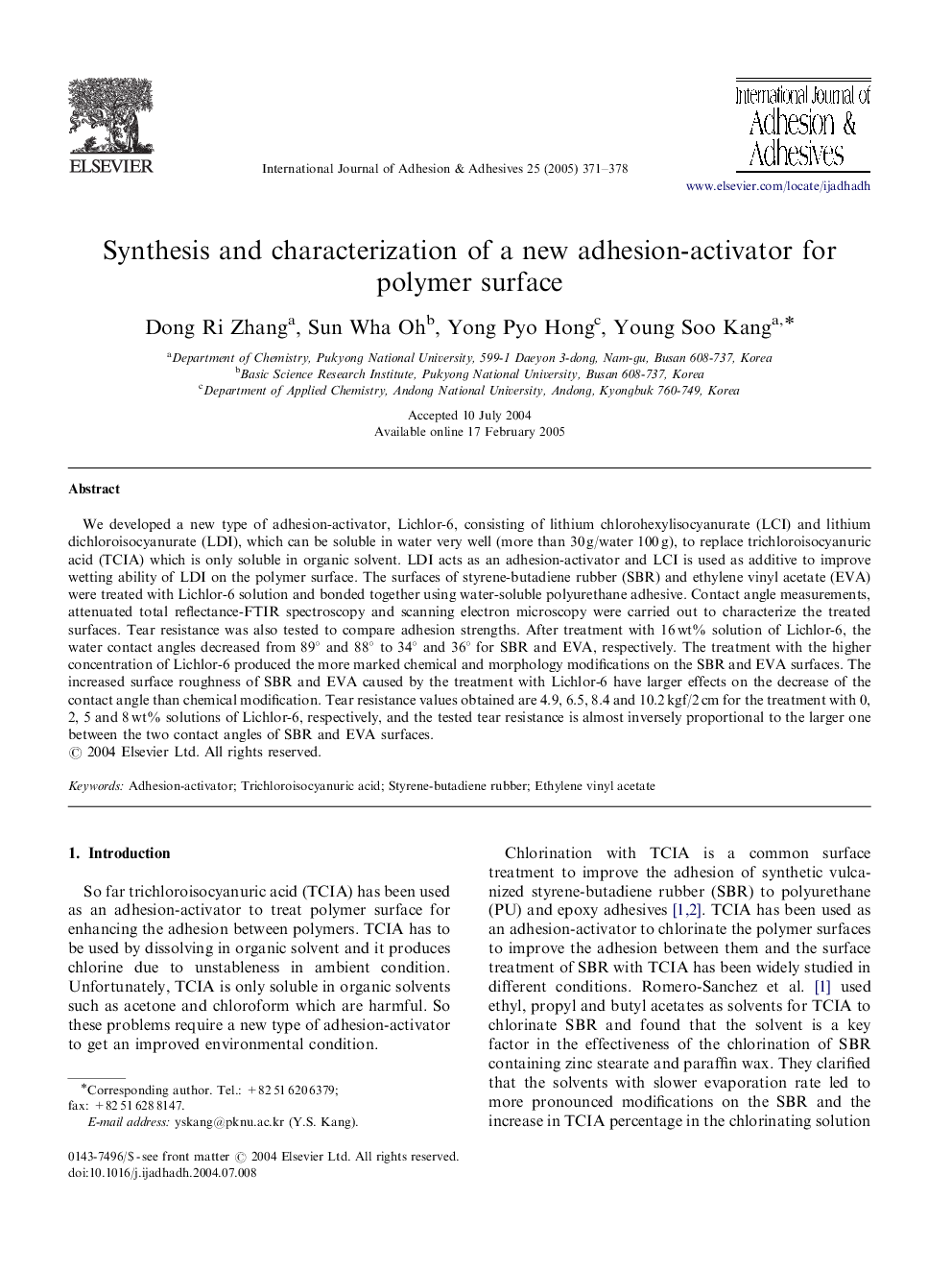| Article ID | Journal | Published Year | Pages | File Type |
|---|---|---|---|---|
| 9703539 | International Journal of Adhesion and Adhesives | 2005 | 8 Pages |
Abstract
We developed a new type of adhesion-activator, Lichlor-6, consisting of lithium chlorohexylisocyanurate (LCI) and lithium dichloroisocyanurate (LDI), which can be soluble in water very well (more than 30 g/water 100 g), to replace trichloroisocyanuric acid (TCIA) which is only soluble in organic solvent. LDI acts as an adhesion-activator and LCI is used as additive to improve wetting ability of LDI on the polymer surface. The surfaces of styrene-butadiene rubber (SBR) and ethylene vinyl acetate (EVA) were treated with Lichlor-6 solution and bonded together using water-soluble polyurethane adhesive. Contact angle measurements, attenuated total reflectance-FTIR spectroscopy and scanning electron microscopy were carried out to characterize the treated surfaces. Tear resistance was also tested to compare adhesion strengths. After treatment with 16 wt% solution of Lichlor-6, the water contact angles decreased from 89° and 88° to 34° and 36° for SBR and EVA, respectively. The treatment with the higher concentration of Lichlor-6 produced the more marked chemical and morphology modifications on the SBR and EVA surfaces. The increased surface roughness of SBR and EVA caused by the treatment with Lichlor-6 have larger effects on the decrease of the contact angle than chemical modification. Tear resistance values obtained are 4.9, 6.5, 8.4 and 10.2 kgf/2 cm for the treatment with 0, 2, 5 and 8 wt% solutions of Lichlor-6, respectively, and the tested tear resistance is almost inversely proportional to the larger one between the two contact angles of SBR and EVA surfaces.
Related Topics
Physical Sciences and Engineering
Engineering
Mechanical Engineering
Authors
Dong Ri Zhang, Sun Wha Oh, Yong Pyo Hong, Young Soo Kang,
